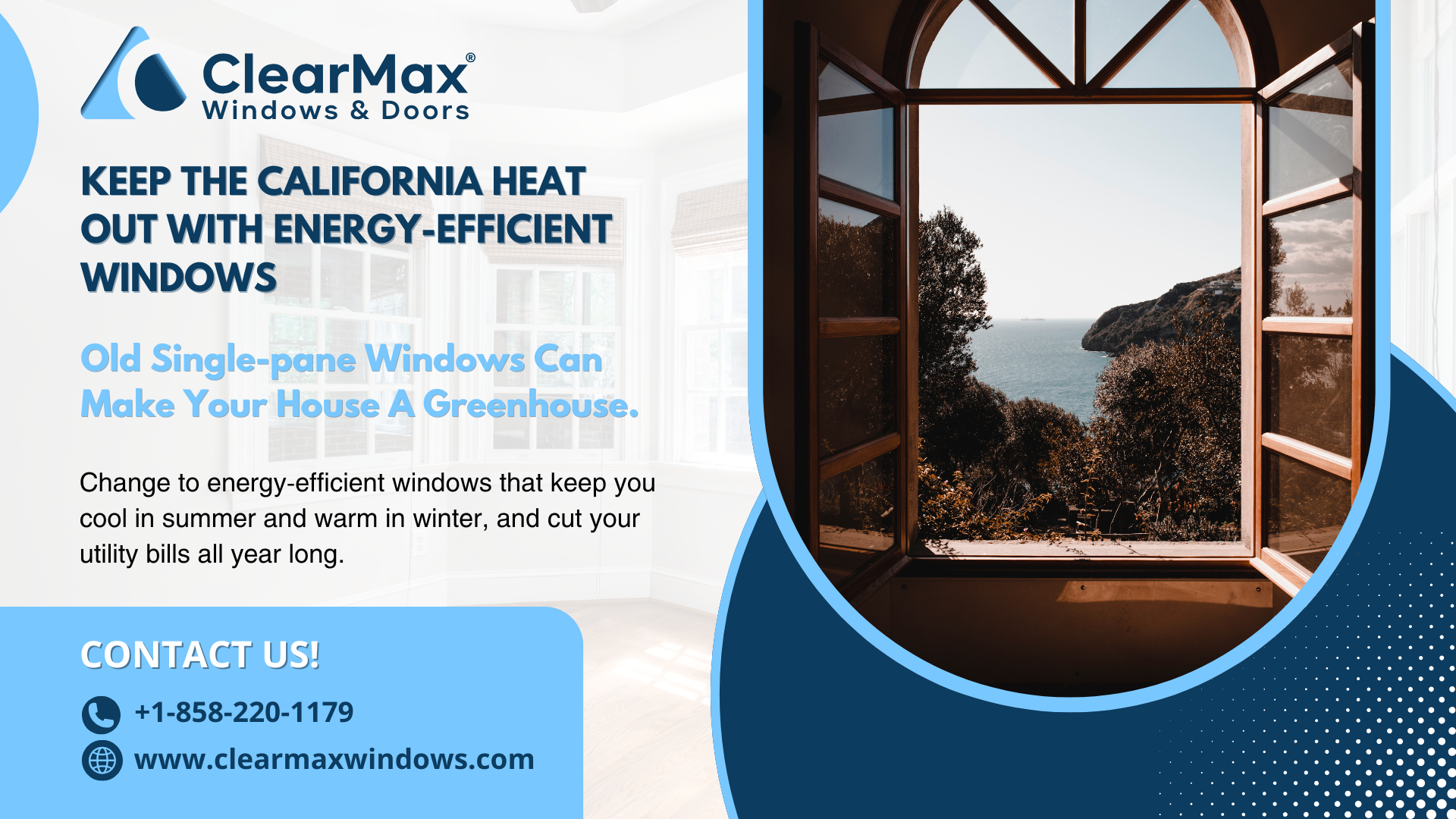The Best Energy-Efficient Windows for California Homes

If you have been living in the state of California for the past few summers, you realize the heat isn’t simply outside, but it can work its way inside, too. I recall a visit a few summers ago to a friend’s home in San Diego. The ocean breeze was refreshing and wonderful, but walking inside their house by noon, it felt like a greenhouse. The cause? Old single-pane windows that were like sheets of glass just letting the sun come in.
This scenario is not unusual. Many California homes still contain older windows that may look nice from the outside, but offer little or no temperature control. Energy-efficient windows make a significant difference since they are constructed specifically to keep heat outside in the summer, keep heat inside in the winter, and save you AC costs and heater costs, by doing the work for you!
Why Energy Efficiency is a Big Deal Here
California’s climate is tricky. On the coast, you get mild breezes. Drive an hour inland, and suddenly it’s triple digits. If your windows aren’t keeping up, your energy bills are going to reflect it.
Most people don’t think much about windows until they notice a draft or see condensation. But in a state where cooling costs can climb fast, inefficient glass means money literally flying out the window. And with California’s Title 24 building standards, homeowners are being nudged toward smarter, greener choices anyway.
What Makes a Window “Energy-Efficient”?
Here’s where people sometimes get lost in jargon. So let’s keep it simple:
Low-E glass is a very thin coating which reflects heat back outside. Natural light passes through, but the heat effect is not there.
Double or triple glazed windows have more glass layers with gas in between which serves as insulation. It is like wearing two shirts instead of one when it’s cold outside.
Frame material: vinyl and fiberglass can be regarded as better insulators than aluminum.
Excellent installation: even the best window would not perform if it is not properly installed. Tiny gaps would allow air to pass through and thus wasted energy would occur.
Styles That Work Best in California
Not all windows perform the same, and some styles just work better for this climate.
- Not all window types offer the same quality of performance, and some styles will merely suit particular climates better than others. Casement windows (hinged and swing outward) seal tightly and minimize air infiltration.
- Sliders are appropriate to contemporary home styles and in terms of convenience and access, especially when in living rooms or bedrooms areas.
- Picture windows do not open, keeping insulation and drafts far away, and are ideal for maximizing light and view.
- Double-hung windows have become a more traditional style and with today’s double-hungs feature enhanced insulation and thermal performance over more aged products.
So…How Much Can You Actually Save?
The question I have to answer quite often is: “Are new windows worth the cost?” In case you are replacing old single-pane windows, then the answer is definitely yes.
It is reported by the majority of California homeowners that their savings in energy costs would be in the range of $125 to $450 a year. Although it might not seem like a huge difference in the first place, still, the fact that windows can last for decades should make one think practically; the total revenues after a certain period would be substantial. Moreover, there are other benefits like a quieter house, less fading of furniture, and higher comfort level.
Meeting California’s Energy Codes
Here’s another thing to keep in mind: California has some of the strictest energy codes in the country. Two ratings to look for:
- U-Factor: tells you how well the window keeps heat from escaping. Lower is better.
- SHGC (Solar Heat Gain Coefficient): shows how much sun heat comes through. Again, lower is better for our hot summers.
Windows with the Energy Star label usually meet these standards, so it’s a good shortcut when you’re shopping.
More Than Just Savings
It’s easy to focus only on bills, but energy-efficient windows also bring side benefits that people don’t always expect. For example:
- There will be much less street noise, which is really great if you live in a fairly busy neighborhood.
- You won’t have cold spots by the window in winter or warmth that collects in corners in summer anymore.
- The UV protection saves hardwood floors, rugs, and artwork from being bleached out.
- There are now many new models with stronger locking systems, so that enhances security, as well.
- Tips for Choosing Without Becoming Overwhelmed
- Shopping for windows can get overwhelming very quickly with so many brands, ratings, and styles. The trick is to begin with the thing that bothers you the most right now.
How to Choose Without Getting Overwhelmed
Shopping for windows can get overwhelming fast, so many brands, ratings, and styles. The trick is to start with what bothers you most now.
- Do you hate high energy bills? Focus on performance ratings.
- Is your main goal comfort? Pay attention to Low-E coatings and pane options.
- Want something low maintenance? Look at vinyl or fiberglass frames.
Also: don’t overlook installation. I’ve seen people spend thousands on premium windows, only to let a cut-rate installer handle it. The result? Drafts and leaks. A professional, airtight installation is non-negotiable if you want to see the benefits.
A Final Word
Ultimately, energy-efficient windows are more than just a set of numbers on a bill. It will affect how your home feels. Summers won’t be as stifling, winters won’t be so chilly, and the house will simply feel more livable.
In California, if you’re considering replacing, don’t wait until you are starting to see some visible signs of windows failing, by replacing them sooner you can start the money and comfort savings sooner
And if you’re not sure where to start, hire a local expert. They will know all the products that adhere to Title 24 standards, use styles that go with your neighborhood, and which windows will yield the best return on investment.







